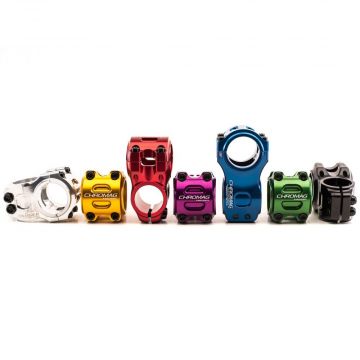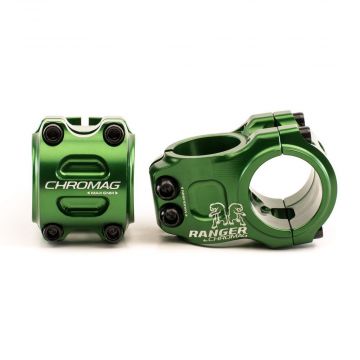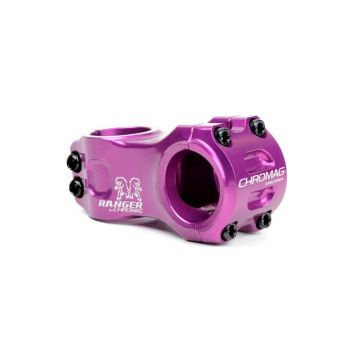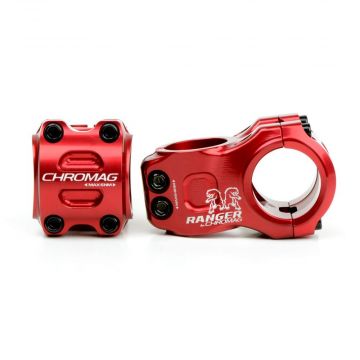Chromag Ranger V2 31,8 Stem
Heti toimitettavissa ja noudettavissa!
RANGER V2 STEM
- CNC machined in Canada by mountain bikers!
- Sharp, clean lines and intricate design
- 31.8mm bar mount
- Our lightest stem
Process // CNC Machined
Material // Premium 6061 Alloy
Lengths // 31/40/50/60/70mm
Rise // 0º
Clamp Size // 31.8mm
Stack Height // 38mm
Steerer // 1 1/8"
Weight // 175g (50mm)
Click here to view the stem user guide.
CNC Machining is a process in which a piece of raw material or stock is cut into a final desired shape using a computer controlled machine and often several different machine tools. Depending on the operation in question different tools are called, for example ball mills, end mills, thread mills, taps and slitting saws to name a few, all have different uses and come in all manner of shapes and sizes.
Machining produces extremely accurate parts, often to within 0.001" (I know, Canada is mostly metric but the industry predominately uses imperial units), and is renowned for creating a very high-end look with 3D surfacing and clean, strong edges which forging cannot produce.

Because every aspect of the part must be "cut out" machined parts take a long time to produce. A Ranger body for example takes 20 minutes to machine (the face plate is made separately), then it still needs to be deburred, quality checked, anodised, laser etched and assembled.
Our CNC Machined parts are generally more expensive than our Forged parts.
Zedler is known within the cycling industry as the foremost test institute for bicycle frames and components. Based in Germany, they have been making test equipment and conducting third party testing for 30 years. In the cycling industry, the most common testing standard for bicycles and components, the EN/ISO Standard, is decades old and not really relatable to the kind of loads that modern components see. For this reason, Zedler have created test standards that test up to the EN/ISO standard and then far beyond this, to simulate the most extreme scenarios that today’s components will see in use.
Part of the latest evolution of our handlebars was to ensure that all of the design improvements we’ve made translated in to real-world, measurable increases in performance. Part of this was to build our own test lab and equipment, where we can test prototype and also production batches of handlebars for safety and performance. We also sent our new carbon bars to Zedler to test them to their high industry standard, which allows us to benchmark them against other products available on the market.
The tests in question relate to the fatigue life of the bar, and are designed to simulate the loads that the handlebar will see over its entire service life. These include a precisely designed and controlled sequence of loads on the handlebar in all directions, and also a ‘Push-Pull Test’ which as the name suggests, pushes and pulls on the bars with a high force, in the middle of the test. In the real world, this could relate to landing a large drop to flat after already riding the bar for a few years.
Both the Cutlass and BZA passed the highest test standard available from Zedler, the ‘Advanced Plus’ test. Both handlebars were intact at the end of these tests, and we stopped ‘End of Life’ testing when it became clear that it may take many more rounds of testing to see a failures from the bars.

Tälle tuotteelle ei ole vielä annettu arvosteluita.













